As an Amazon Associate I earn from qualifying purchases.
Depression Glass holds a special place in the heart of almost anyone who loves vintage or antique decorations.
For my wife, pink depression glass is the absolute creme de la creme of antique glassware and she has (not without encouragement) filled our dining room china case with all sorts of depression glassware settings.
However, it’s always a challenge when we find a new piece…should she add it to her collection or should I sell it on eBay?
Typically, I get to sell it. Unless it’s really special.
Given that, I do have quite a bit of experience finding, identifying, cleaning, and valuing pink depression glass.
So, since many people value antique beauty as much as my wife and I do, I figured it was high time to put together a guide to help people identify their favorite patterns (mine is Princess…), value their pieces, and learn a bit of the history which makes depression glass even more special than it’s monetary value would suggest.
So let’s get to it!
Depression Glass – A Brief History
Despite the following that it has now gained, Depression glass was not always considered as desirable as it is now. In fact, it was the cheapest possible option available at a time when people were unable to buy much of anything else.
Depression Glass was mass-produced and widely distributed in the United States during the Great Depression (hence its name) from roughly 1929–1939.
Most Depression Glass was actually given away for free as a promotion or sold at rock-bottom prices to get people into stores.
For example, many manufacturers would include a piece of depression glass in boxes of food or in bags of flour as a marketing ploy to encourage people to buy their products.
Depression glass was also obtained through premiums in cereal boxes, purchased in dime stores, or given away as prizes in movie theaters.
They were able to do this because, unlike traditional finer-quality glassware, Depression Glass was not hand-finished. Instead, was manufactured using molds and then smoothed off, or “fire polished,” to remove mold marks. This also led to slight variations and imperfections in pieces that fascinate many collectors.
In order to maintain the public’s interest, the glass was offered in a ton of different colors, the most common of which include clear (marketed as “crystal”) pale blue, green, amber, and our beloved pink depression glass.
However, there were many other colors produced including canary yellow (known as ‘topaz’ or ‘golden glow’), white (milk glass), ultra marine, jadeite (opaque pale green), delphite (opaque pale blue), cobalt blue, red (ruby & royal ruby), black, amethyst, monax, and iridescent.
The colors of the pieces was acheived simply by adding different minerals or elements to the mix before the glass was fired. For example, the coloring from blue glass came from cobalt while the pink coloring came from selenium.
I’ll also note that the coloring varied slightly from batch to batch and, even more significantly from different manufacturers. Depression Glass was produced by dozens of companies including Federal Glass, Macbeth-Evans, Hocking Glass, and Hazel Atlas Glass Co. and the “pink” color of glass was also known as Cheri-Glo, flamingo, rose glow, rose tint, or wild rose depending on who made it.
While many people cherish the glass for its historical significance, many more simply love the thrill of hunting down rare pieces or completing a particular set. As some patterns are rarer and more sought after than others, some people (meaning my wife) take it as a challenge to track down every piece.
As the United States came out of the depression, the production of Depression Glass waned, especially following WW2. While some pieces and patterns were produced until the early 1960s it’s typically the older pieces that command a following (and a premium price on the resale market).
Most Popular Pink Depression Glass Patterns (With Pics)
When it comes to pink Depression glass, there are a few patterns that stand out as highly sought-after by collectors.
In my experience, some of the most notable patterns include the American Sweetheart, Mayfair, Open Rose, Diana, Royal Lace, and Princess designs.
Let’s take a look at each of them (and their corresponding value and rarity) so you can start making a wishlist:
American Sweetheart
The American Sweetheart is an elegant pattern commonly found on Depression Glass. It was produced by the MacBeth-Evans Glass Company between 1930 and 1936 (which can help date your glass).
It features a delicate design with a ribbon-like motif and scalloped edges. This pattern is commonly found in pink and monax (opaque white). The pattern also came on some deep red and cobalt pieces which were rarer (and therefore more valuable).
Mayfair Open Rose Design
Another popular Depression Glass pattern is the Mayfair Open Rose design. Also known as the Open Rose pattern, it was manufactured by the Federal Glass Company and features intricate roses with open petals.
The design came in various colors, including pink, green, blue, yellow, and amber.
Diana
Known more commonly as “swirl”, the Diana pattern, produced by the Federal Glass Company, is made up of swirling parallel lines through the piece.
It was made in several colors, such as pink, crystal (clear), iridescent, and ultramarine.
Royal Lace
Royal Lace is probably one of the most intricate and sought-after depression glass patterns. It is one of my wife’s favorite for sure and it fills up too many cabinets in our dining room…
Created by the Hazel-Atlas Glass Company, the design features a detailed lace motif. It came in various colors like pink, green, blue, and crystal.
Princess
The Princess pattern, produced by the Hocking Glass Company, is characterized by its geometric design interspersed with floral elements.
The Princess pattern was made in several colors, including pink, green, yellow, and crystal (the clear version we mentioned earlier).
Cameo
Last, but not least, the Cameo pattern, often referred to as the Ballerina or Dancing Girl pattern, was created by the Hocking Glass Company. This design is marked by a dancing girl silhouette surrounded by an intricate lattice.
It came in a few color variants, including green, yellow, crystal, and, of course, pink.
Determining Value and Rarity
When it comes to determining the value of pink Depression Glass it’s a simple formula that involves condition, pattern, rarity, and demand.
While there are books out there that will give you a recommend “market value” I’ve found them to be wildly inaccurate (they usually overestimate).
Instead, I’ll take into account the four things above and do some market research by looking at sold listings on eBay to come up with a ballpark selling price (or place to start the auction).
While our four criteria are likely quite self-explanatory, let’s take a look at each one and I’ll explain what I’m thinking through well evaluating a piece.
Condition
Because Depression Glass is so widely available, the condition is hugely important. Unless a piece is incredibly rare there will always be another one that comes along in better shape.
When I’m sourcing glass to sell on eBay I’ll typically pass on pieces with any serious defects.
However, it’s important to note that due to the manufacturing methods used, depression glass often has flaws such as air bubbles, heavy mold marks, and uneven thickness. These are not considered defects, but rather characteristics of depression glass. Just be sure to mention them if you’re selling pieces of your collection.
Pattern
The pattern is hugely important in depression glass as it plays into rarity and desirability. Some color/pattern combos are extremely rare and there are people out there who are just waiting for a specific piece to come to market.
If you fail to identify (or you misidentify) the pattern you are selling you greatly diminish your chances of a decent sale and happy customer.
Rarity
While there are more official ways of doing it (research production numbers) I take a simple route to assessing the rarity of a piece: I simply look at how often it appears on online listings.
Nearly every piece I’ve found has at least a couple of other very similar pieces for sale on eBay which helps me to assess how rare it is and how I should price it.
Since I mainly focus on pink Depression Glass it’s easy to get a feel for how rare each design and/or pattern is.
Demand
Luckily, my wife chose to collect a color of Depression Glass that has a consistently high demand. Pink is cute and goes with everything after all…at least that’s what she tells me.
However, some pieces, even rare ones, just don’t have that many buyers.
To assess demand I usually search through eBay’s completed listings and figure out the sell-through rate (dividing the number of units sold by the number of units received, then multiplying the sum by 100).
If a piece is rare but has low demand, you may have to simply price it high and let it sit. For non-rare pieces, I prefer to price it competitively and get it sold as quickly as possible, even if it means slightly less profit.
I didn’t feel like it deserved its own section but I’ll also mention that you should do your best to identify the manufacturer of your glass.
Even if it doesn’t change the price, including the maker in your listing will ensure that people who are looking to build matching sets will get the exact piece that they want and not simply an equivalent piece from another maker.
7 Of The Most Valuable Pink Depression Glass Pieces
Now, the most expensive pieces of pink Depression Glass will obviously not be singular pieces. It will be rare sets. However, most serious collectors don’t buy (or sell) them that way.
Sets of common pieces (plates, bowls, cups, etc.) are sold together for $3-500 and the rare or hard-to-find pieces are auctioned off separately.
So, here are a few of those pieces that were good enough to sell on their own.
Do note that these are not the most valuable pieces in the guidebook for antique glass. These are just some of the most valuable ones that have actually been on the market lately.
At the end of the day, something is only worth what someone is willing to pay for it and these have all proven their worth on the actual auction block.
1. Hocking Old Colony Lace Edge Candle Holders Set
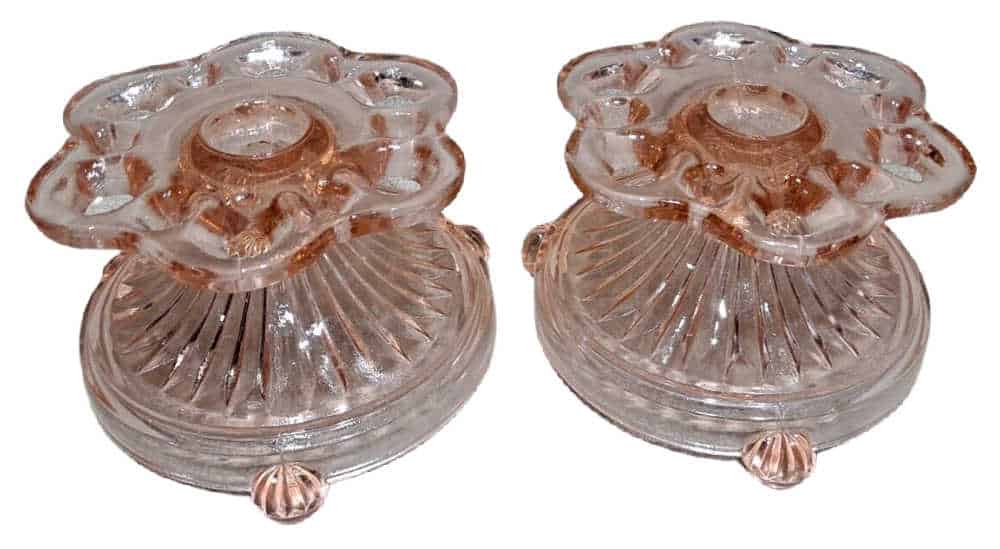
2. Beehive & Thistle Straight Lace Edge Plate Set
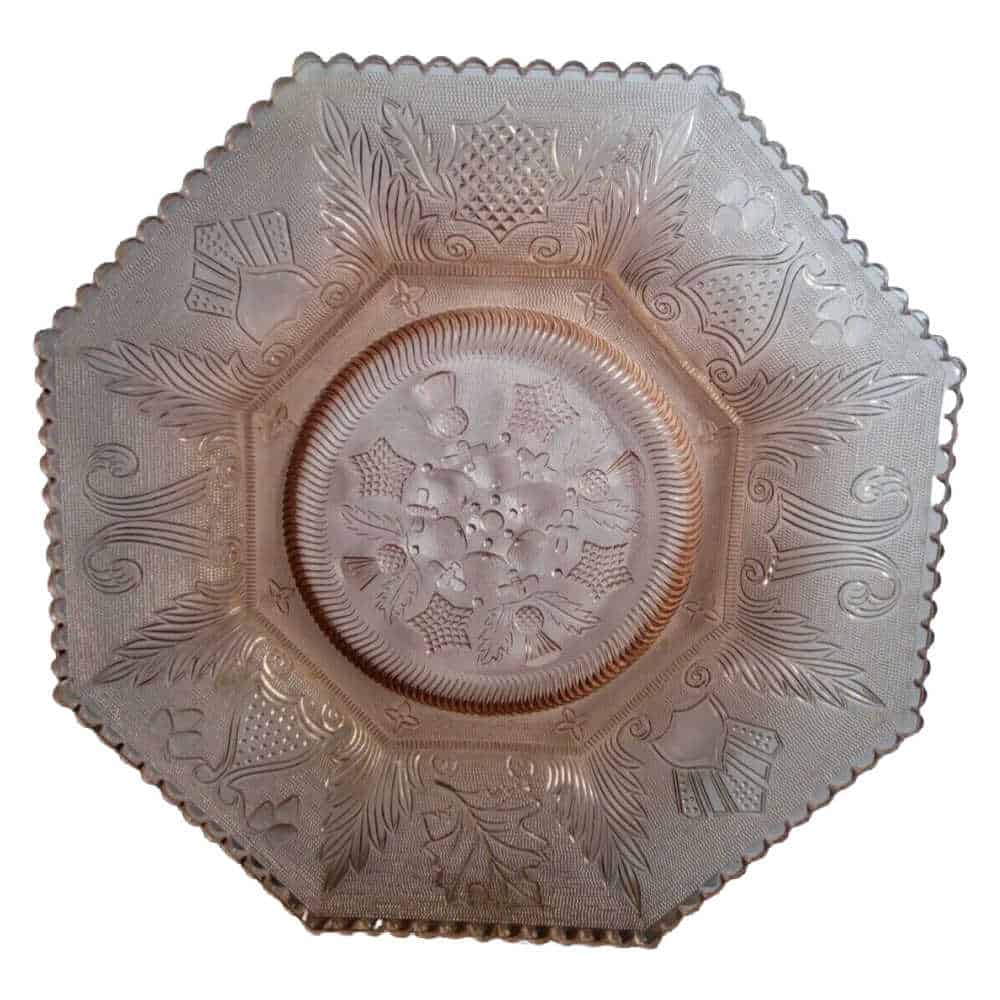
3. Jeanette Cherry Blossom Straight-Sided Tea Cup

4. Divided Grill Plate – Sunburst Pink Depression Glass
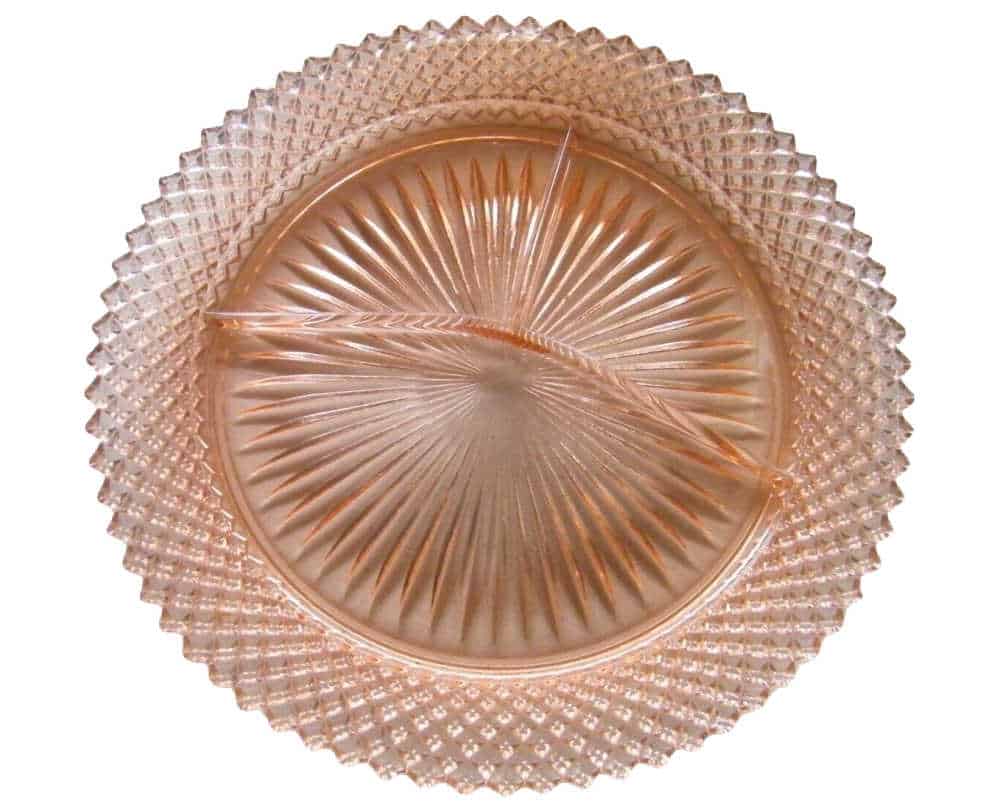
5. Lancaster Glass Co Large Console Set – Bowl/Candlesticks
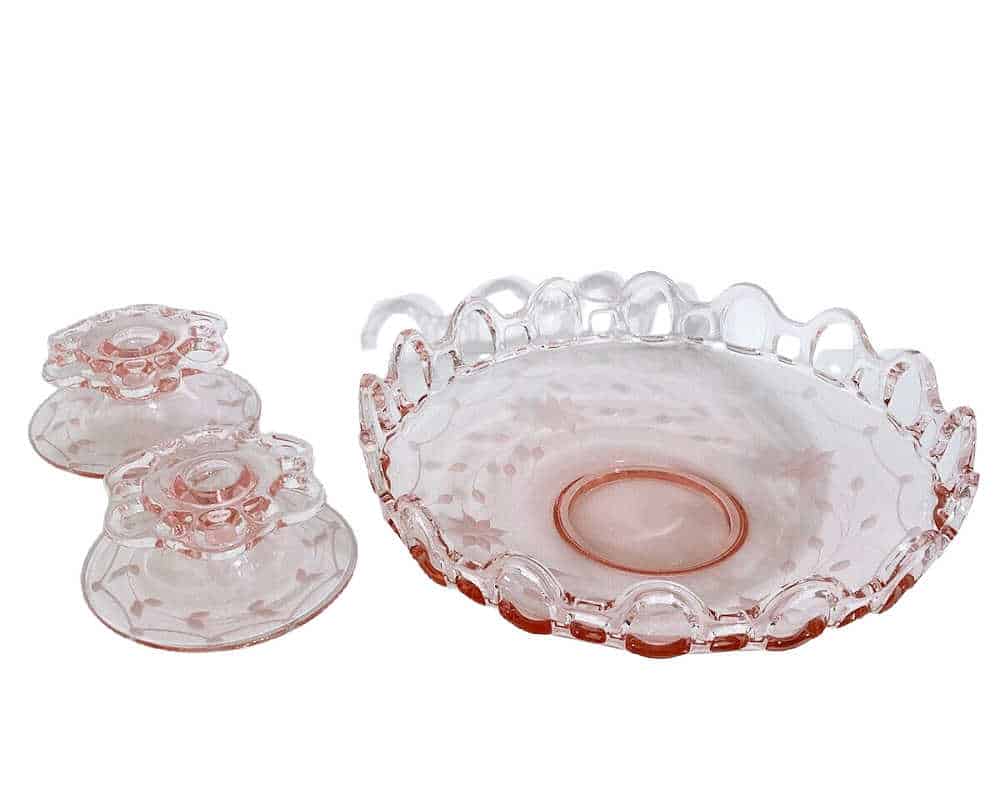
6. MacBeth-Evans American Sweetheart Pitcher (60oz)
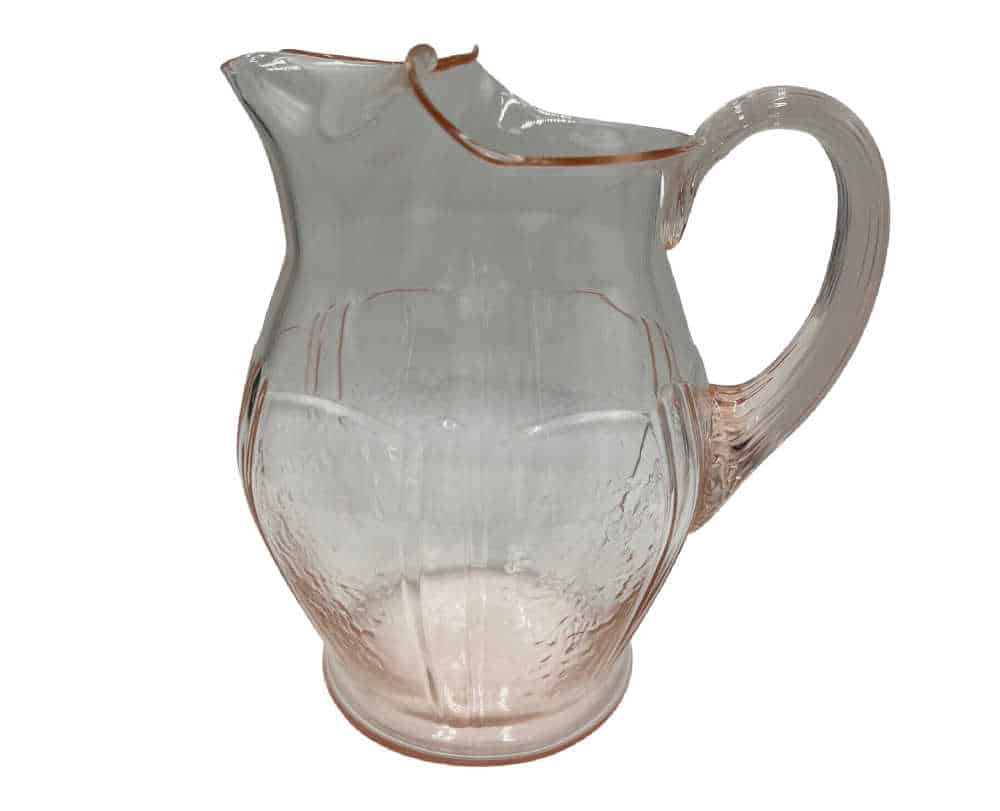
7. Jeannette Glass Co. Windsor Diamond Milk Pitcher
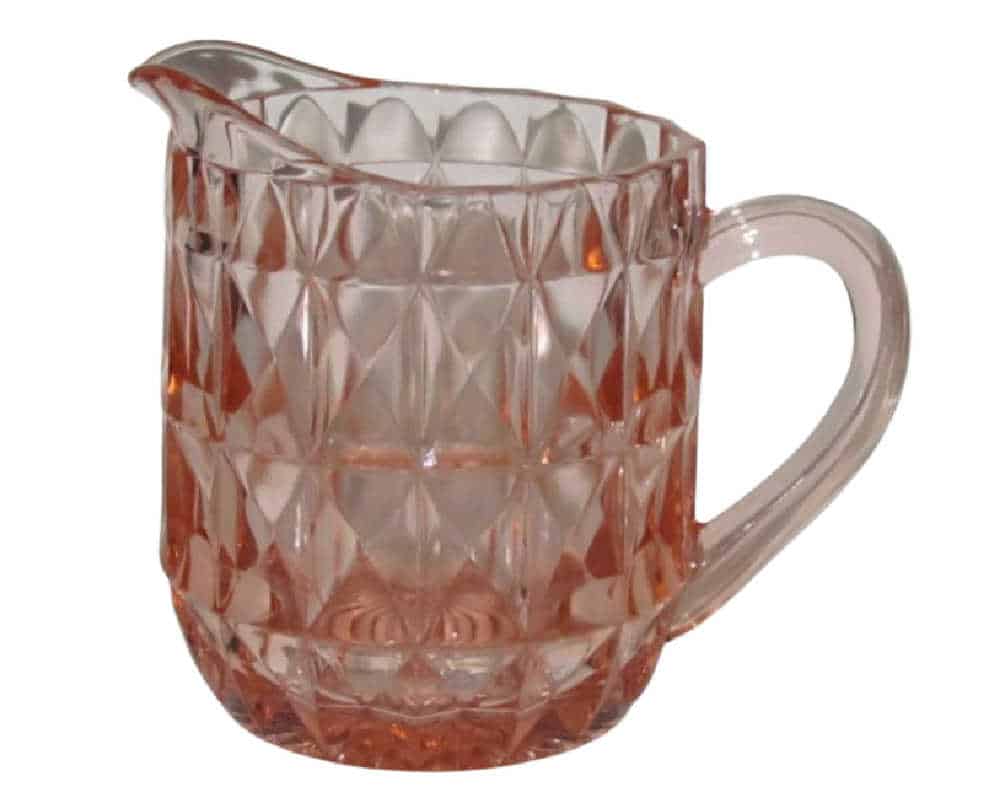
4 Final Tips for Collecting and Selling
As a collector and seller of pink Depression glass, I’ve learned that there are a few essential tips to keep in mind.
Quality is a crucial factor in assessing the value of pink Depression glass. Pieces in good condition, free of chips or cracks, are generally more valuable. However, some collectors may be interested in items with minor imperfections, as long as the overall appearance is still visually appealing.
I also pay close attention to the various shades of pink used in Depression glass, as this can significantly impact its value. While most collectors today prefer lighter hues, some may seek out the rarer colors, such as translucent pink or those with a touch of amber or yellow.
When selling pink Depression glass, it’s essential to provide clear and detailed descriptions of the items, including the pattern, manufacturer, and condition. High-quality photographs are a must to showcase the beauty and details of the glassware and can really set your listing apart (as there are probably hundreds of similar pieces for sale).
Finally, flea markets, antique stores, and online auctions can be excellent places to buy and sell pink Depression glass. While I personally favor eBay for all of my online selling (they have the largest number of potential buyers) there are other markets where people have success (such as Poshmark and Mercari).
Conclusion
So, in short, my wife loves pink Depression glass and I love making money off of it! Although I’m probably just breaking even at this point since she keeps so much of what we find.
Pink Depression Glass is a beautiful artifact of a challenging time in our history. I’ve always found the variety of colors and patterns a fascinating and rewarding area for collectors and sellers alike.
Understanding the history, rarity, and characteristics of each pattern and manufacturer can significantly enhance your ability to accurately value and appreciate these treasures.
So whether you’re looking to expand your collection or sell off some extra pieces, I wish you the best of luck. It’s a wonderful world of pink hues, intricate patterns, and charming imperfections. Enjoy the thrill of the hunt and the satisfaction of finding that perfect piece!


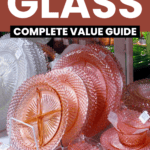
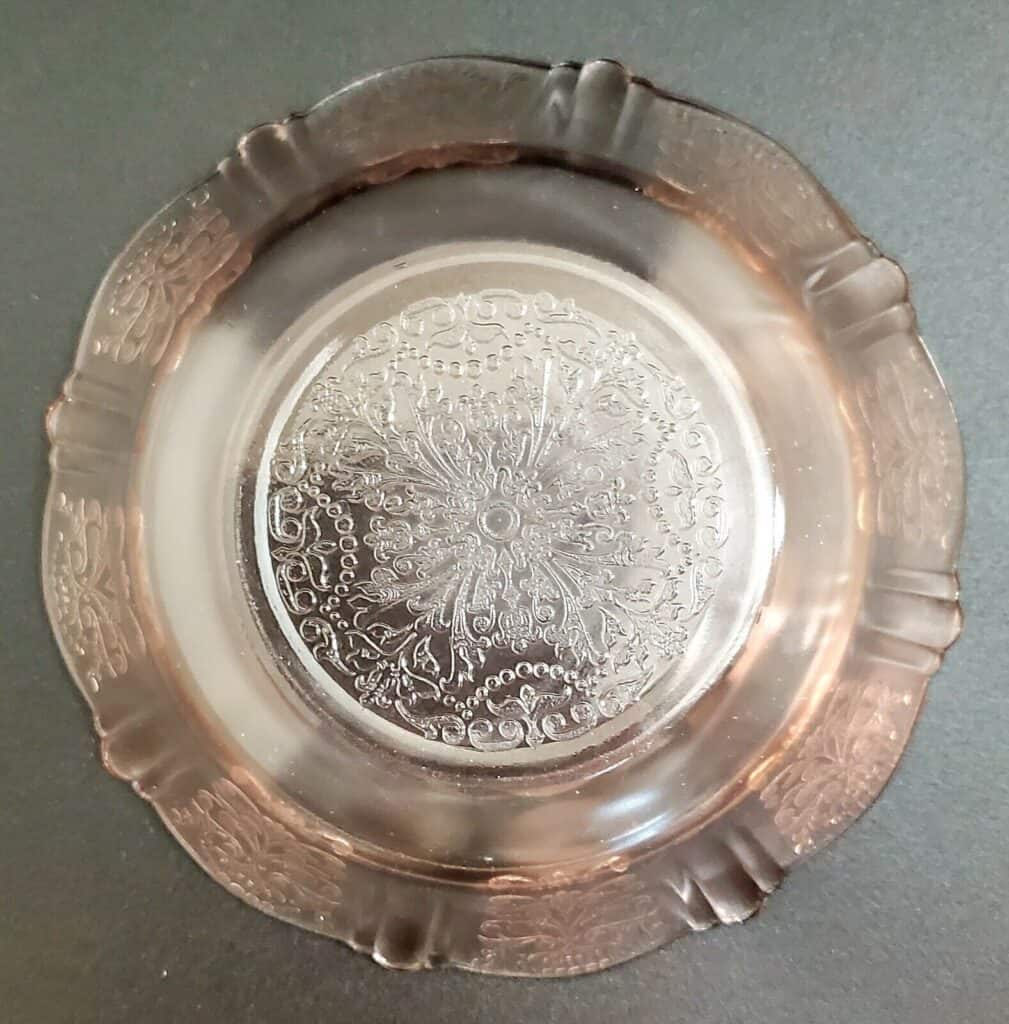
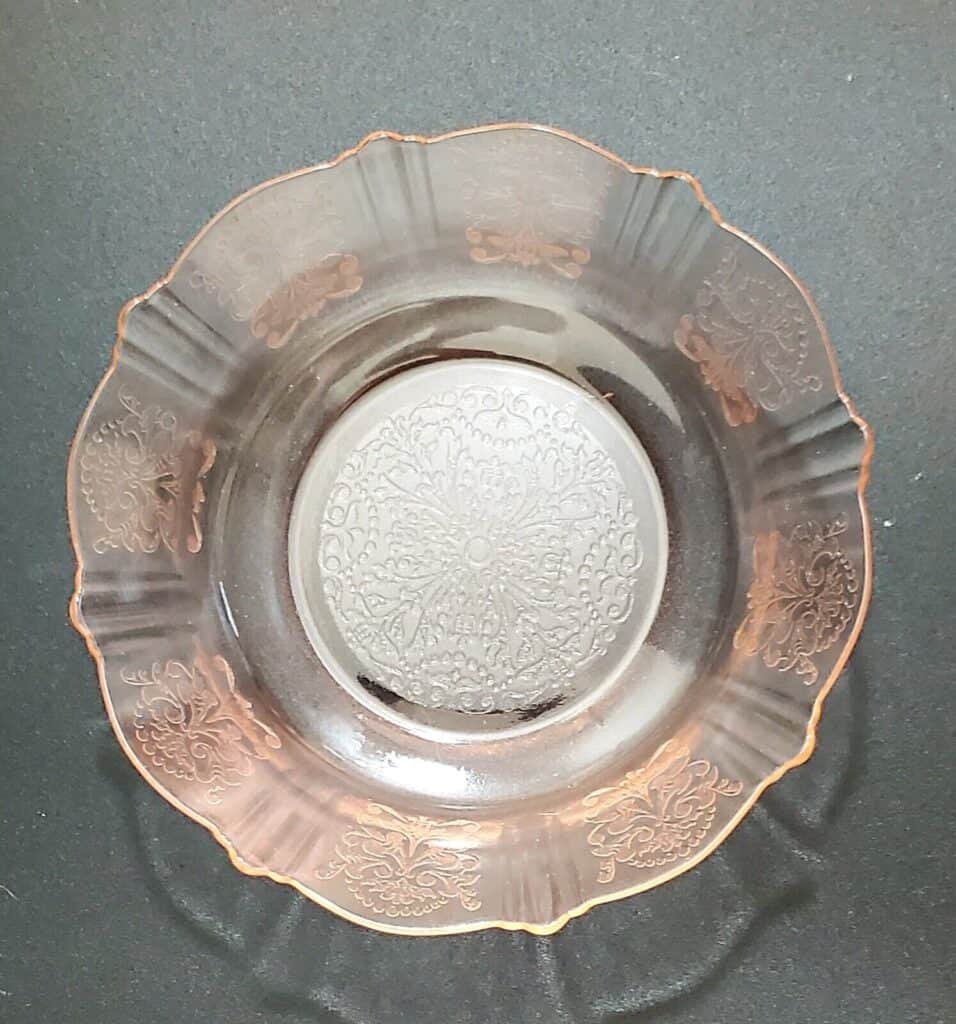
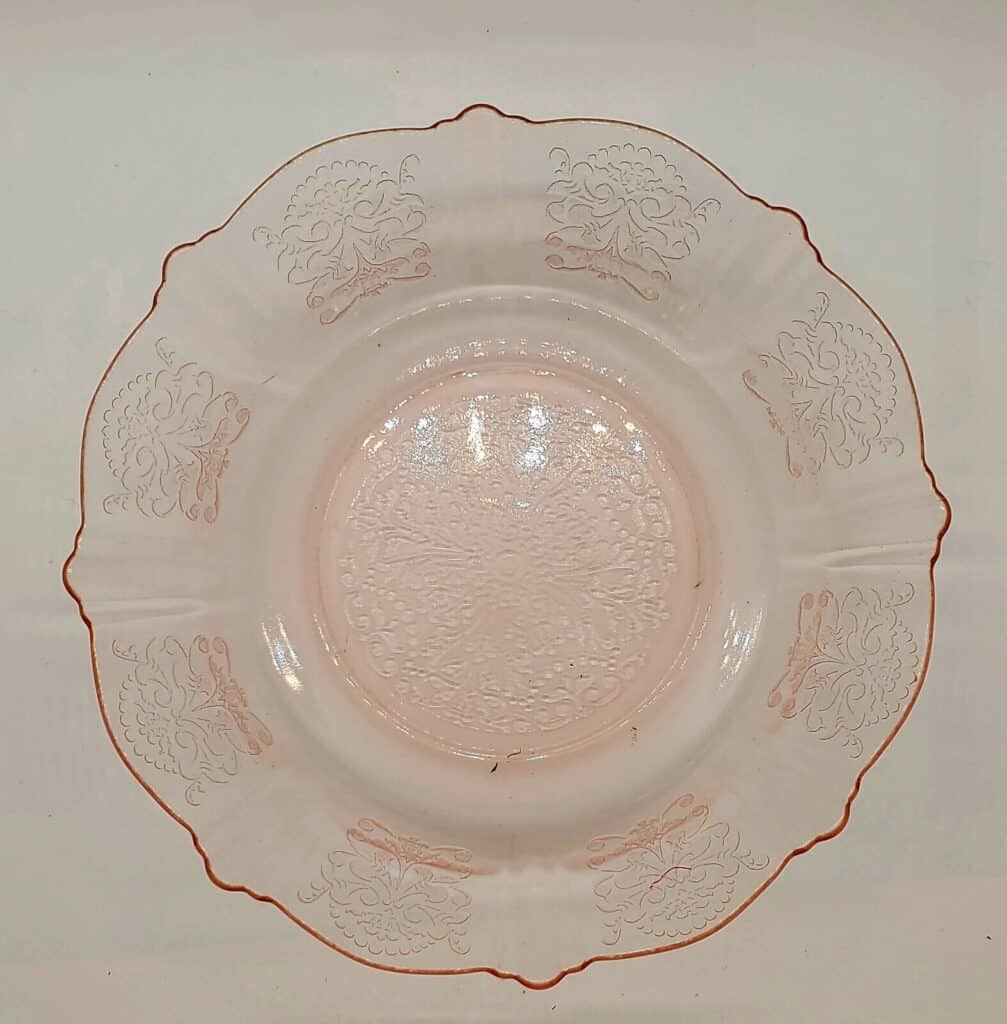
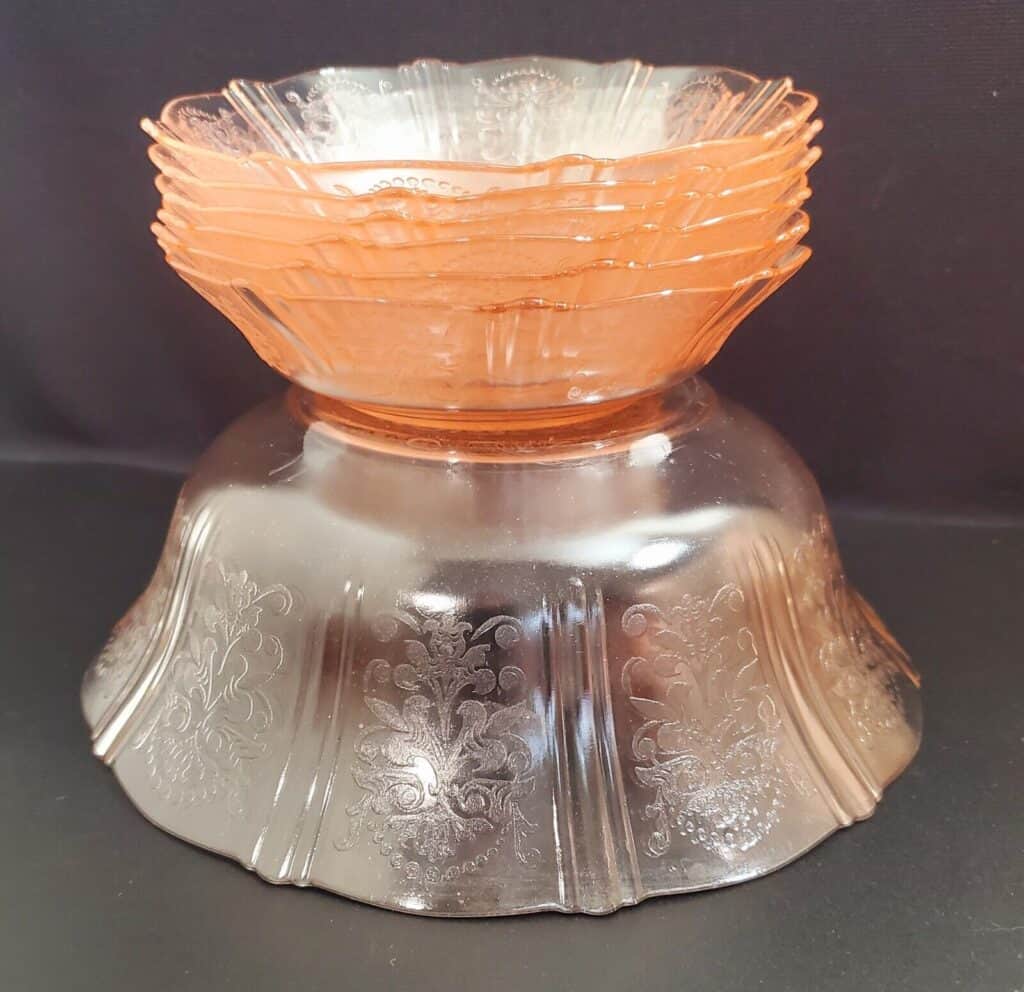
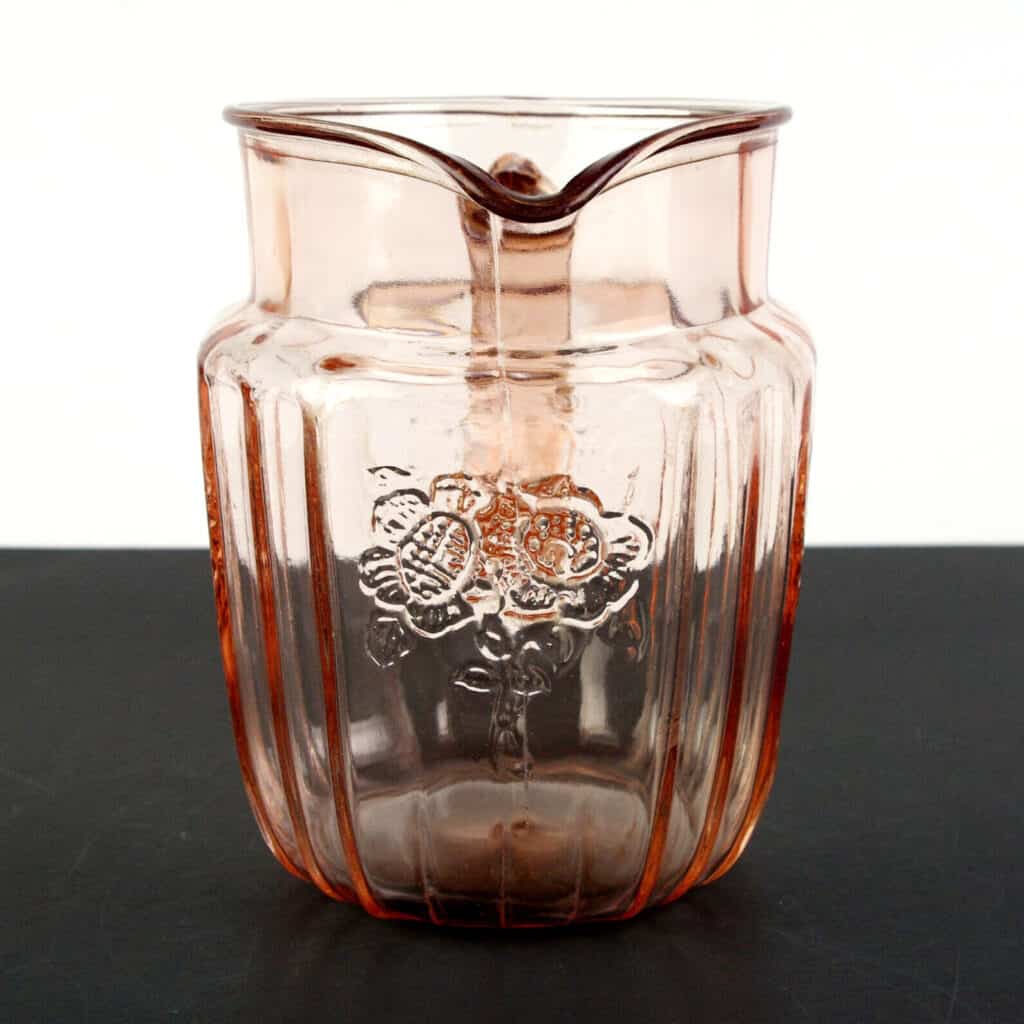
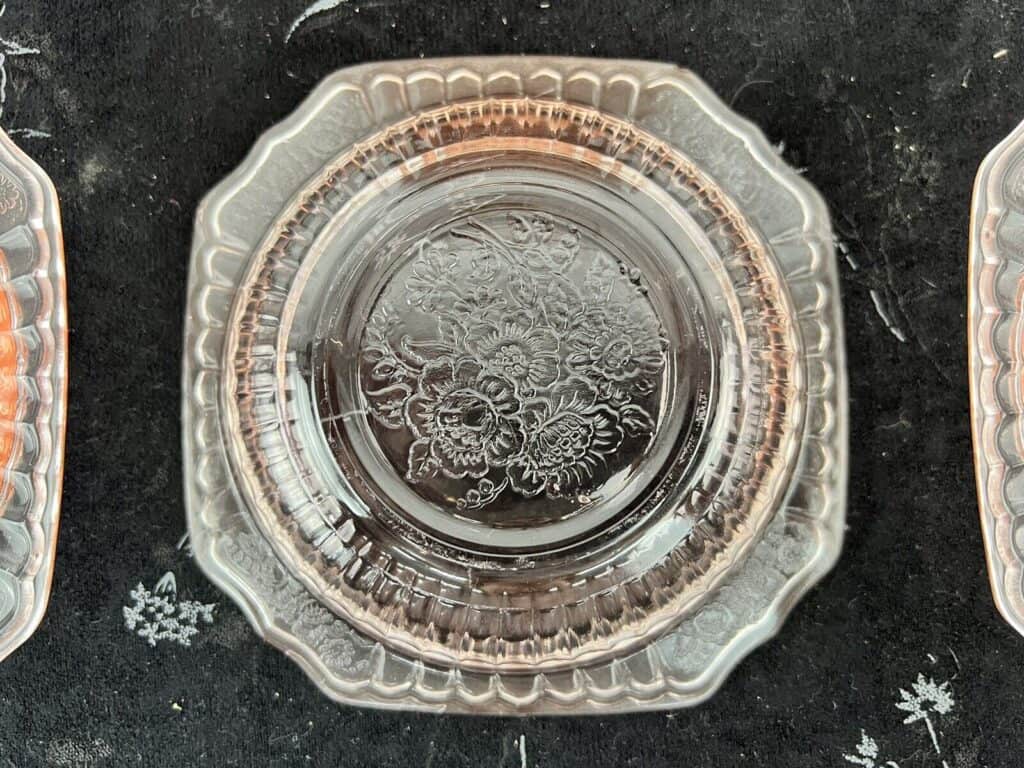
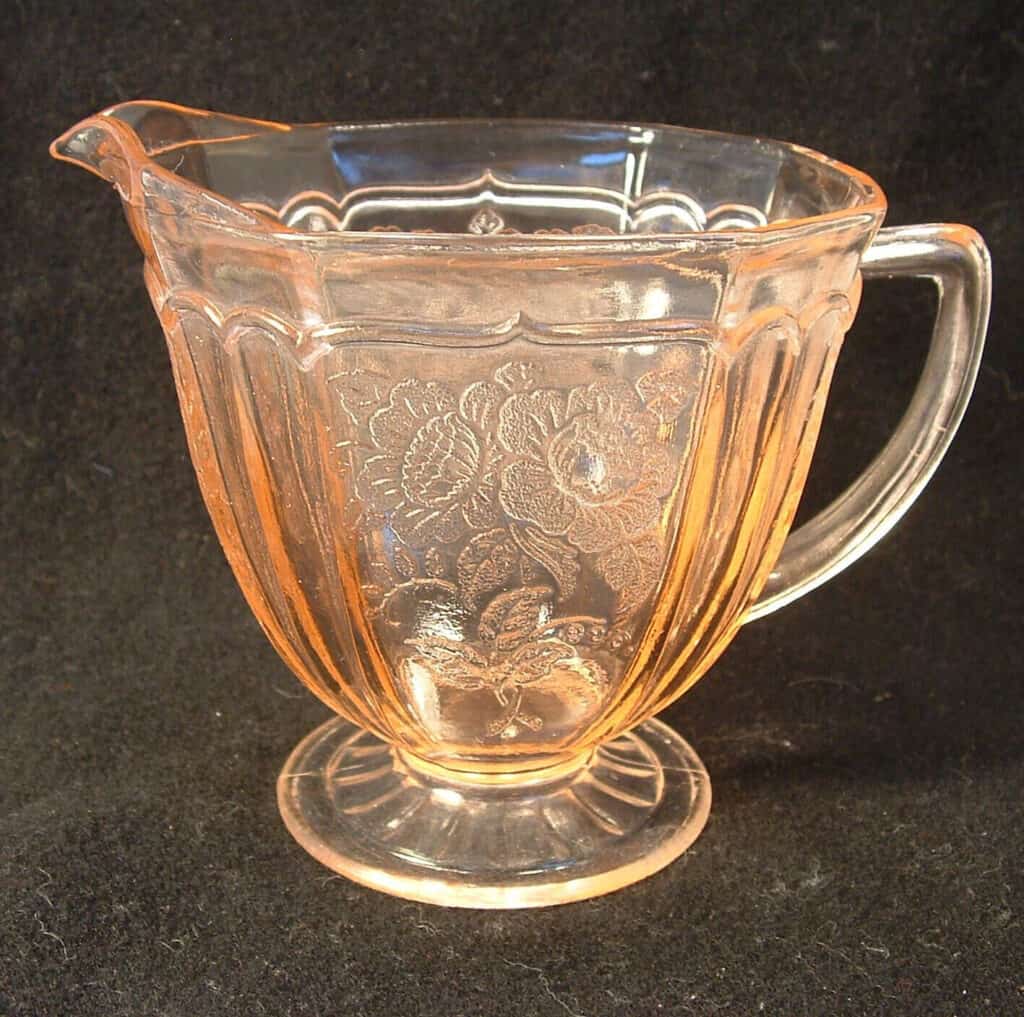
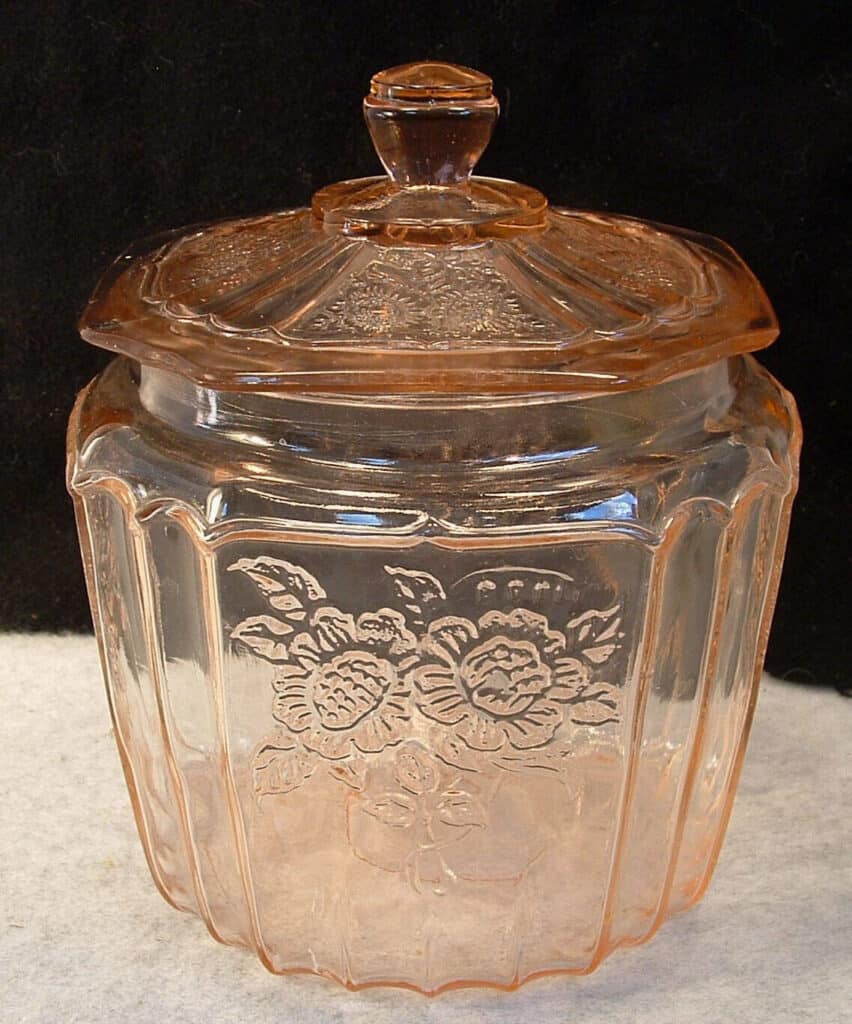
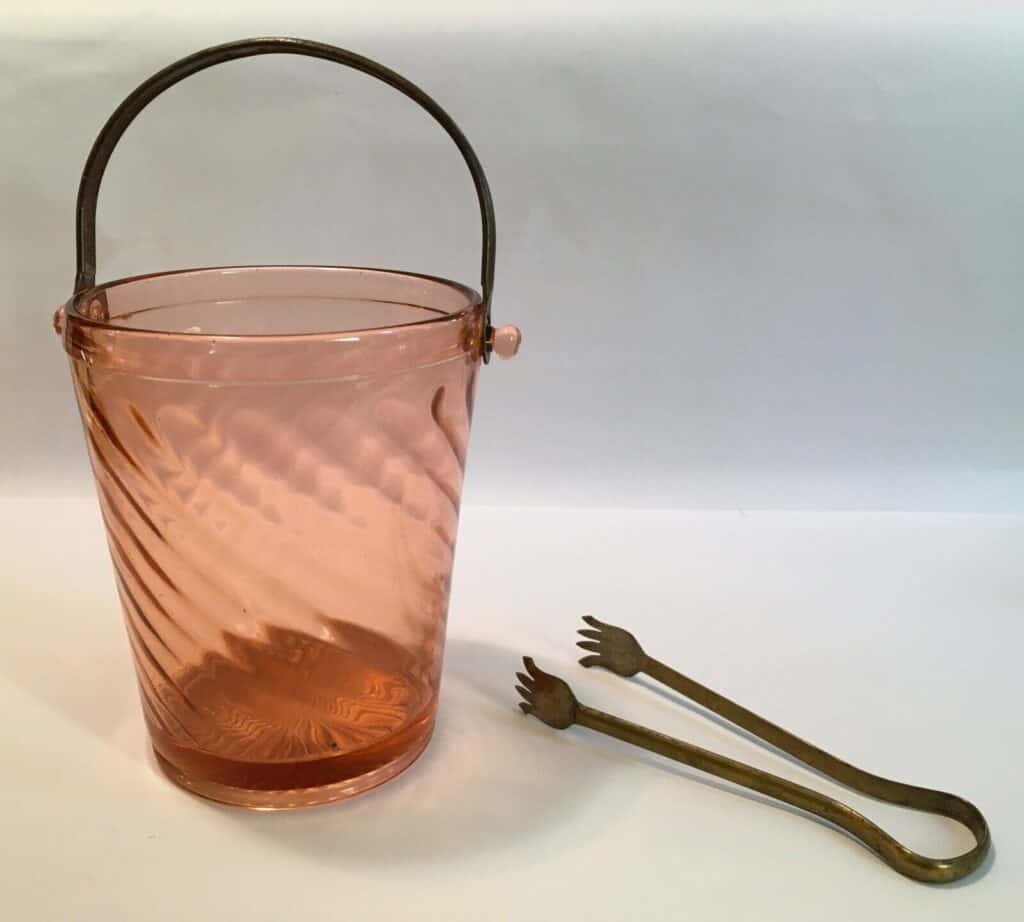
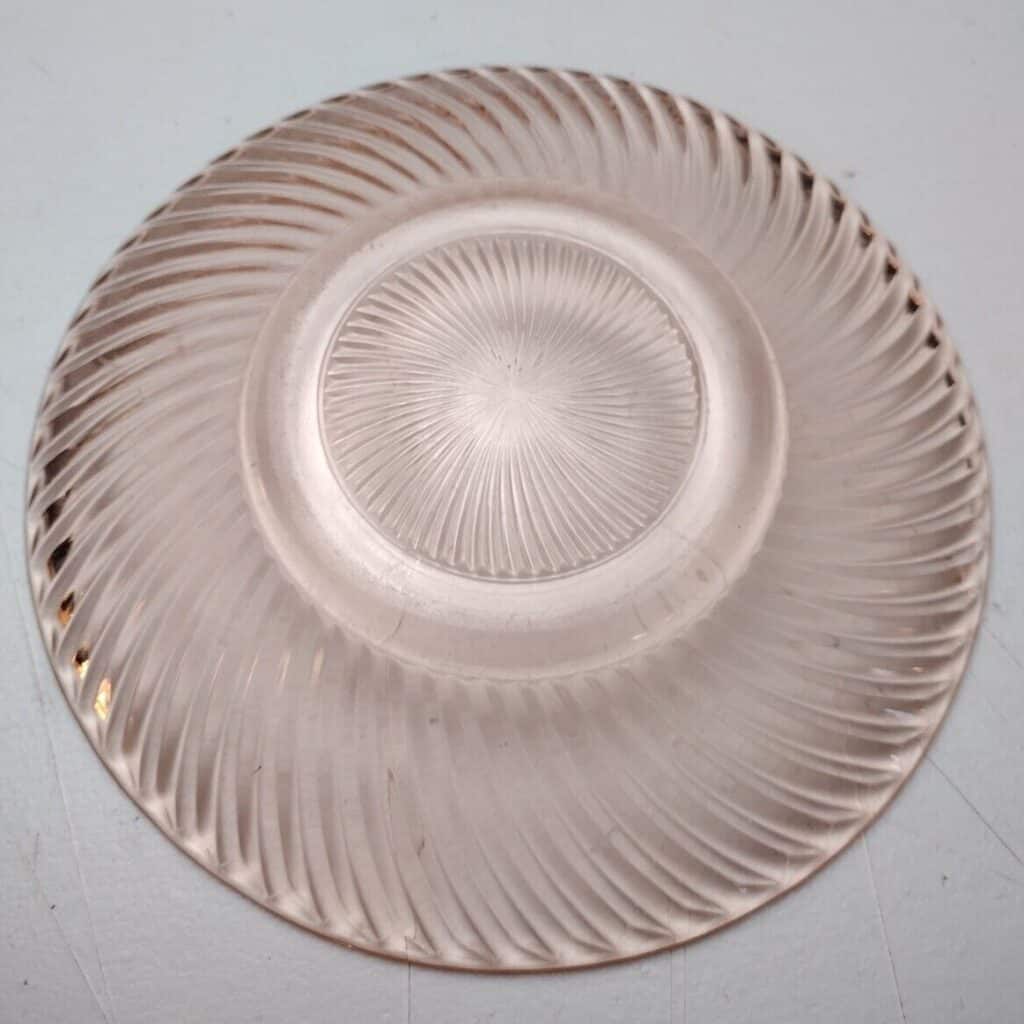
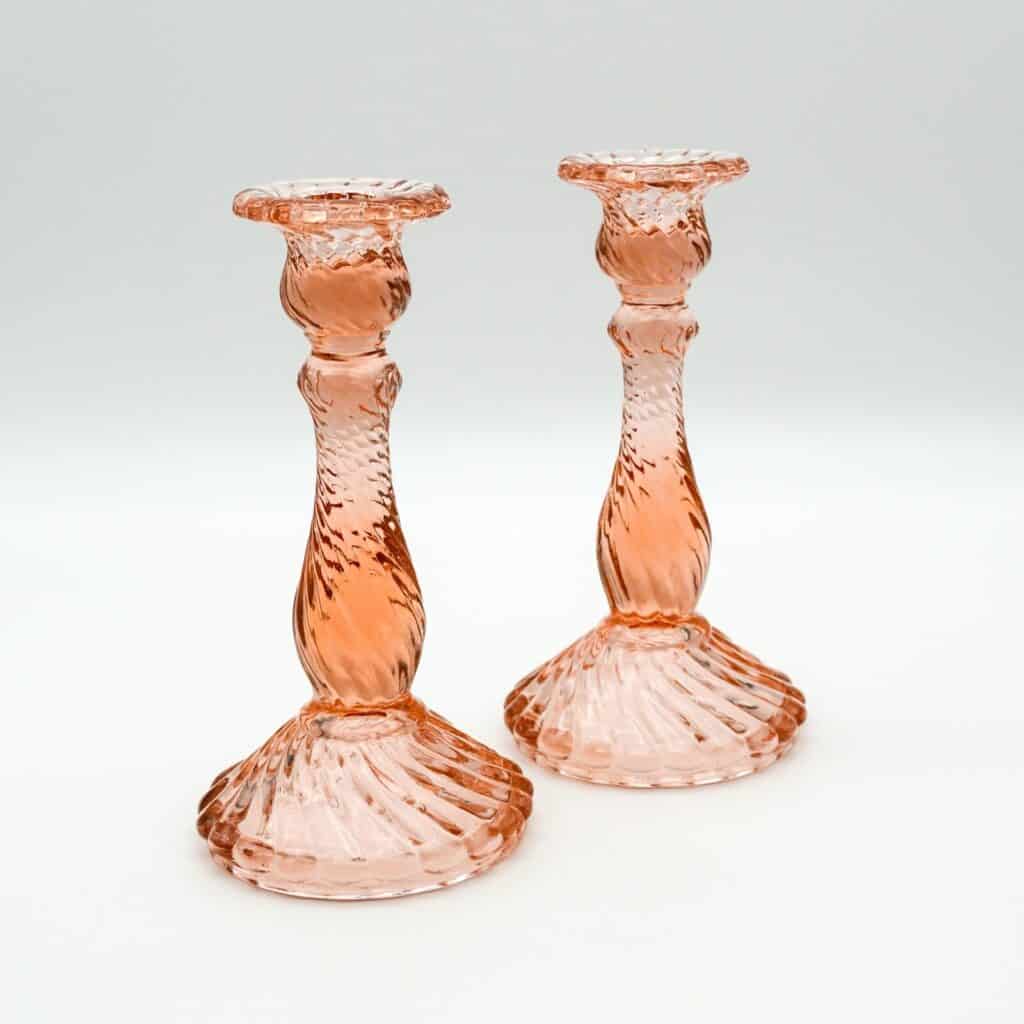
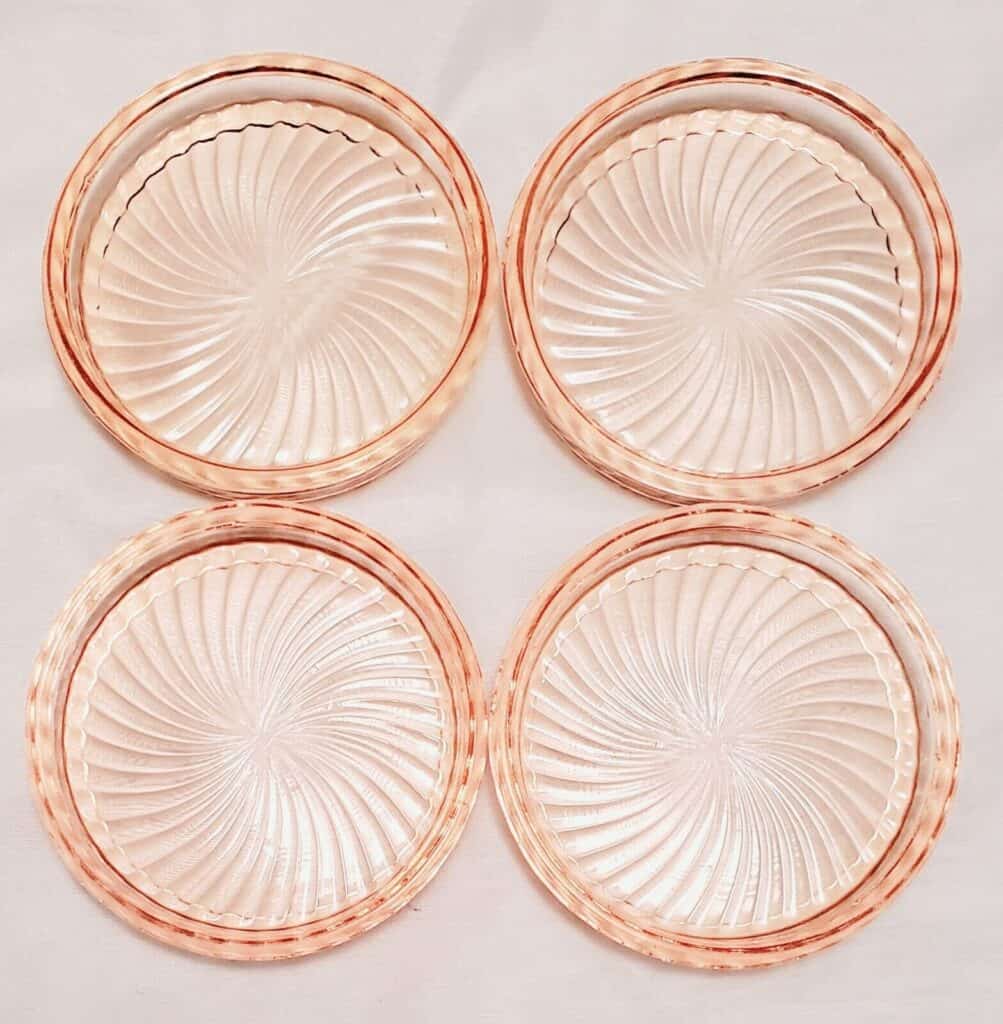
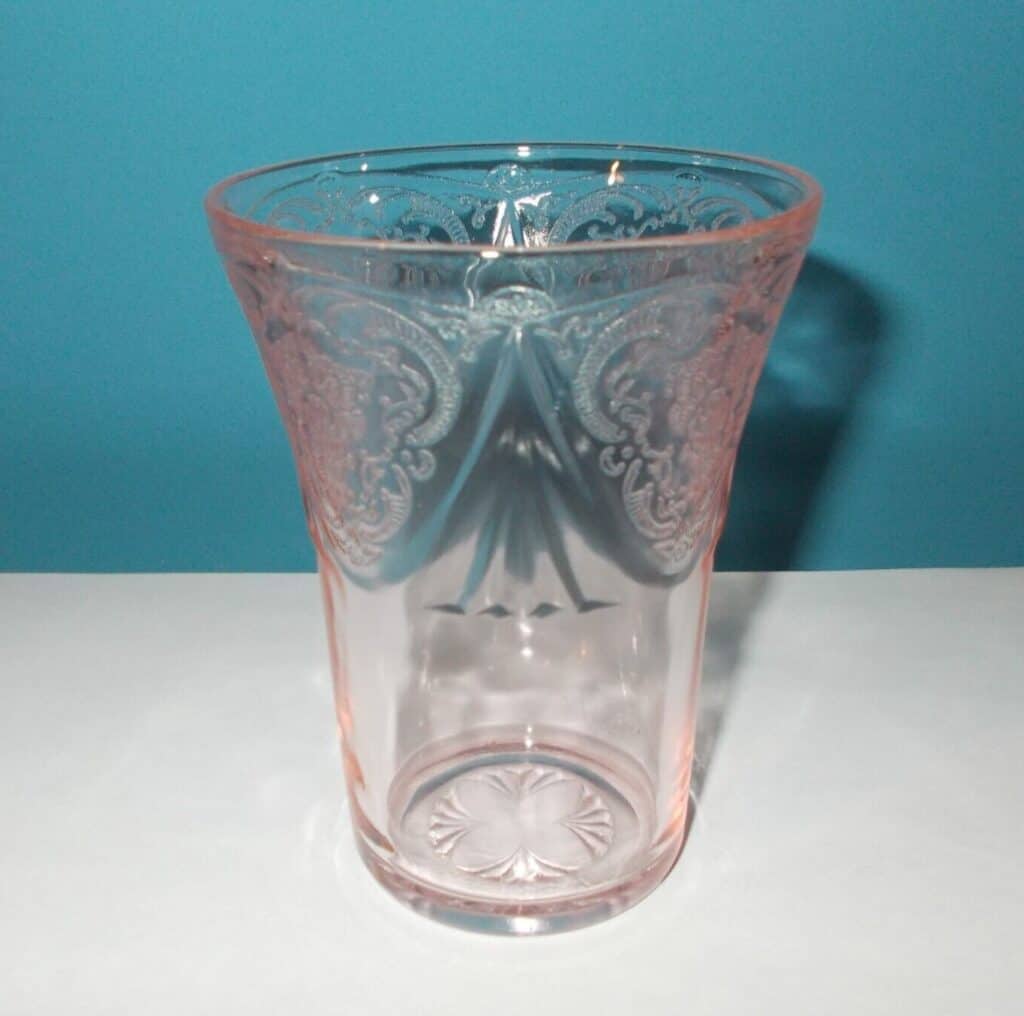
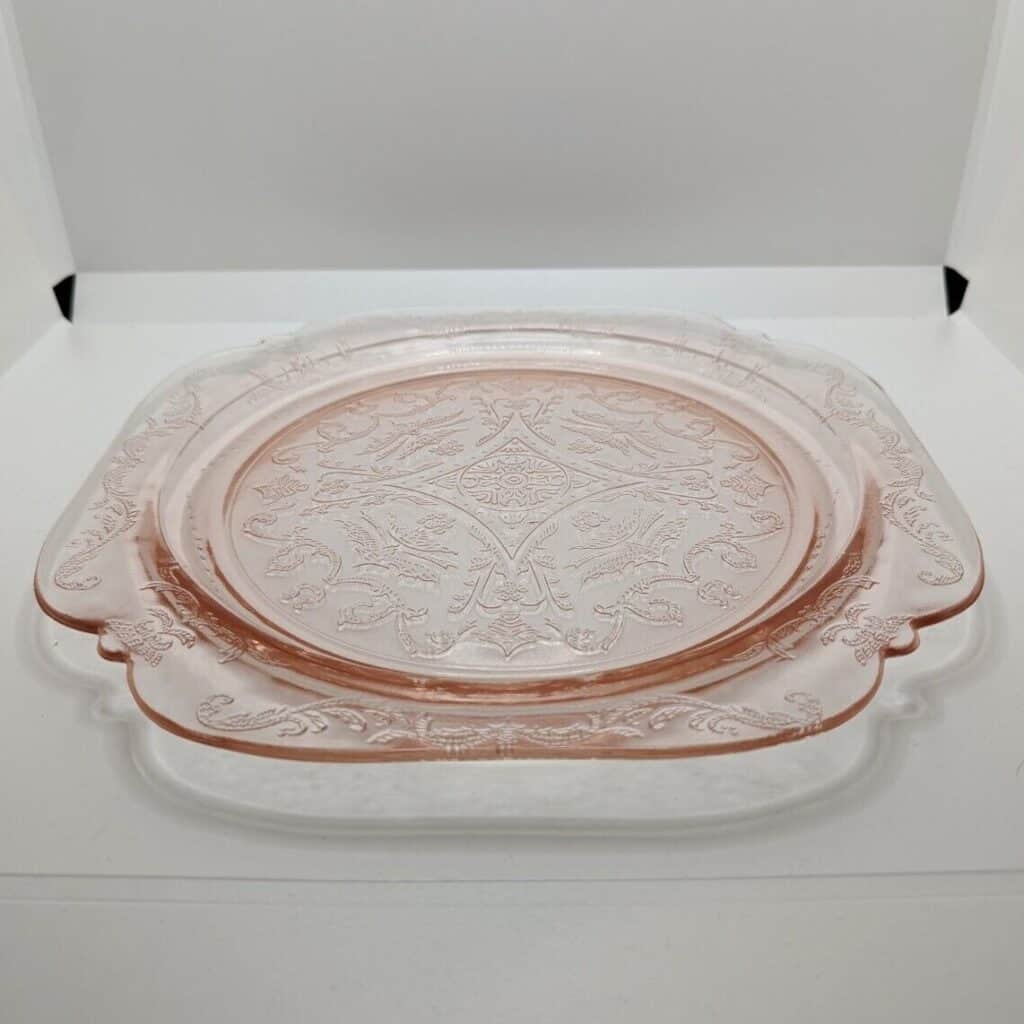
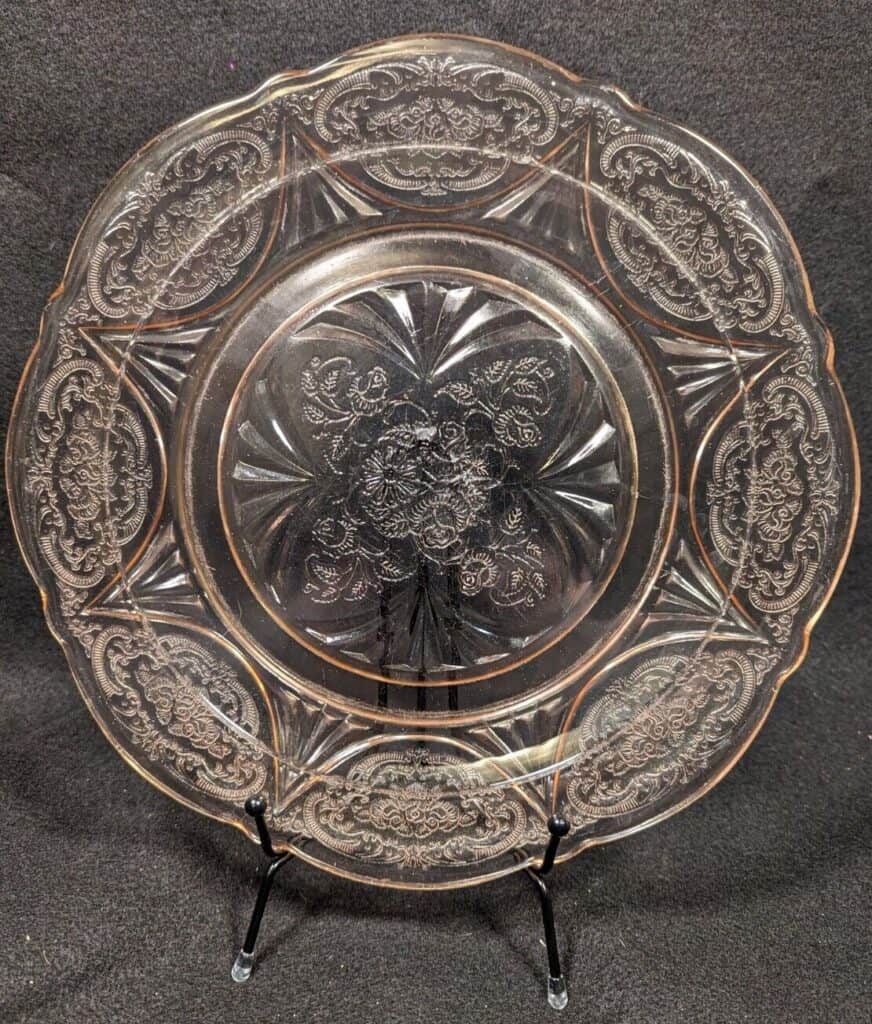
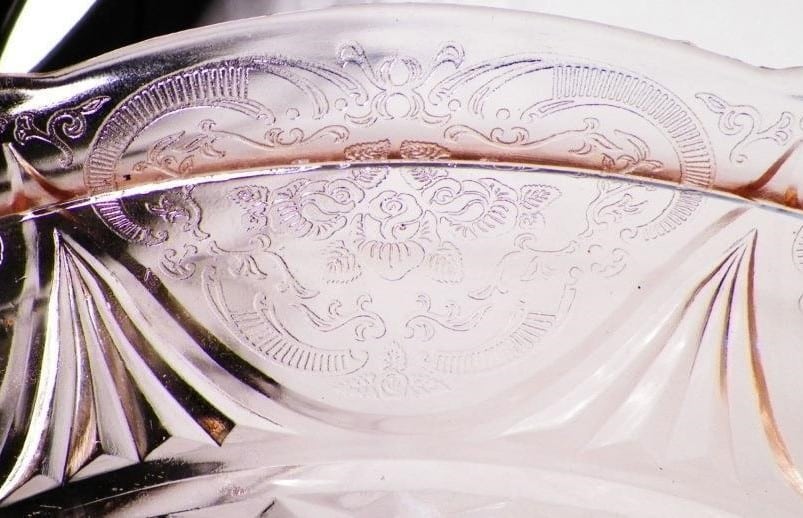
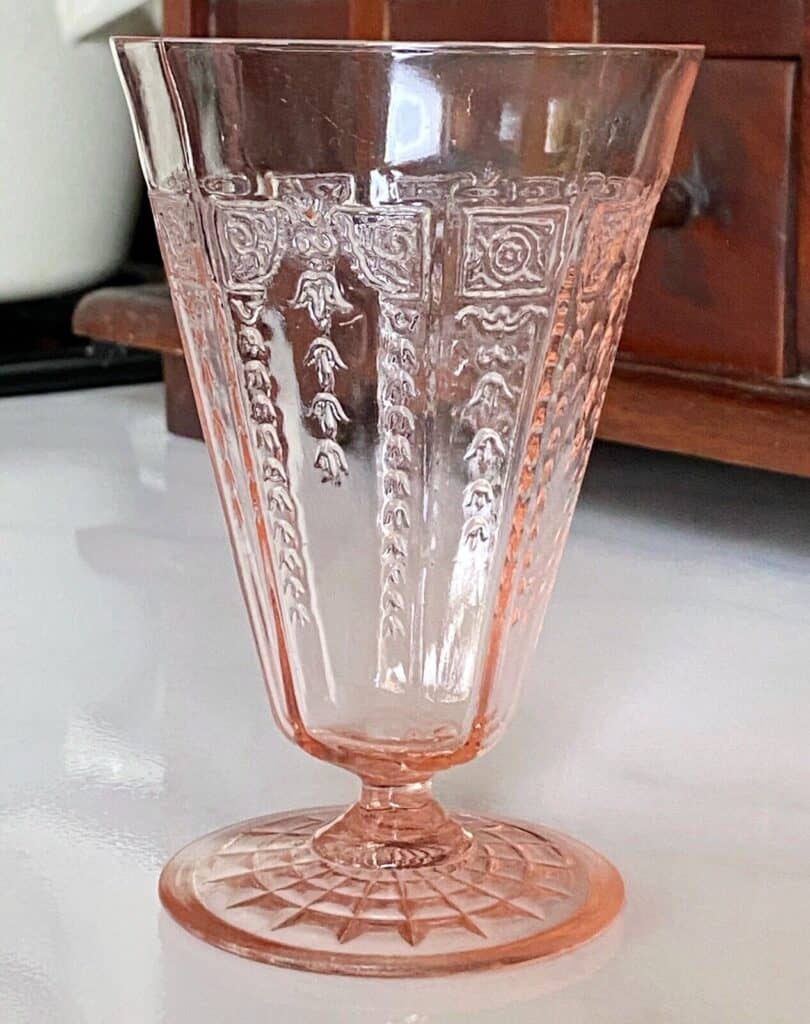
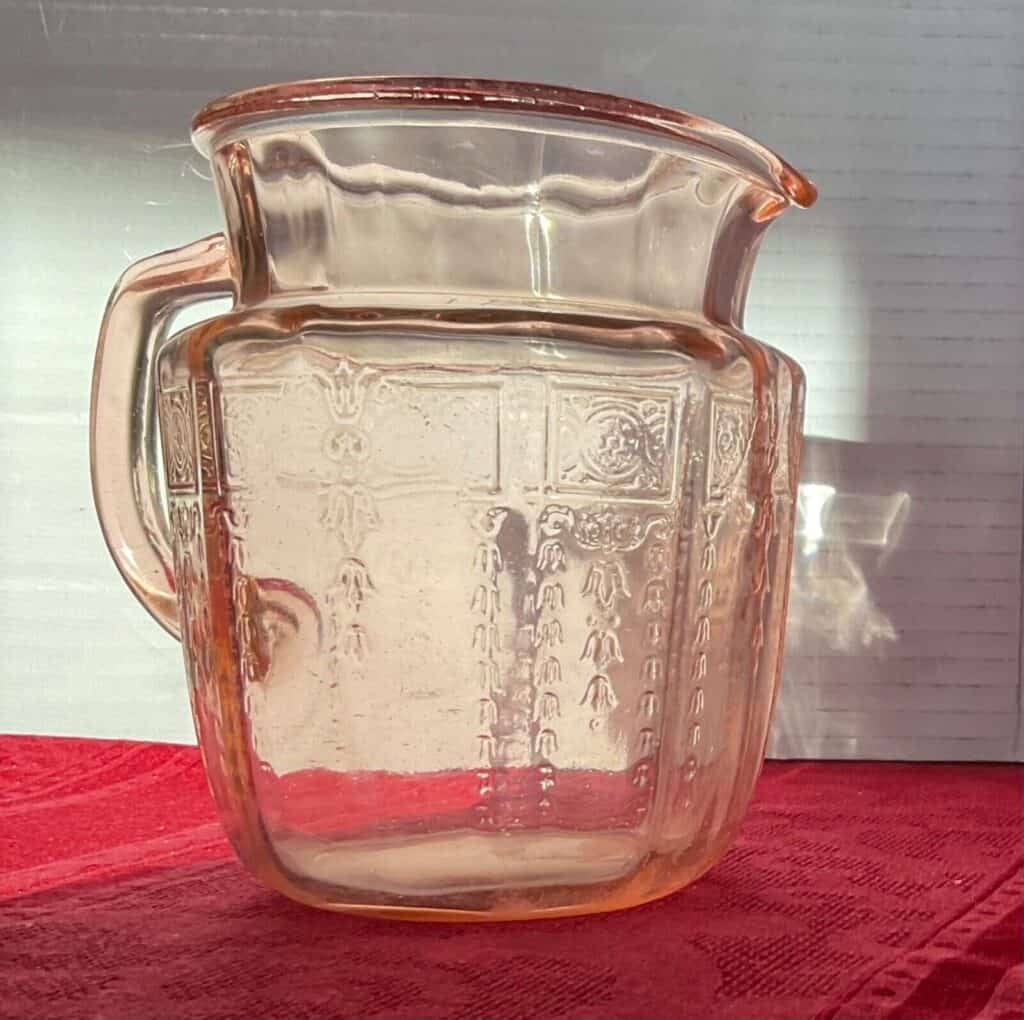
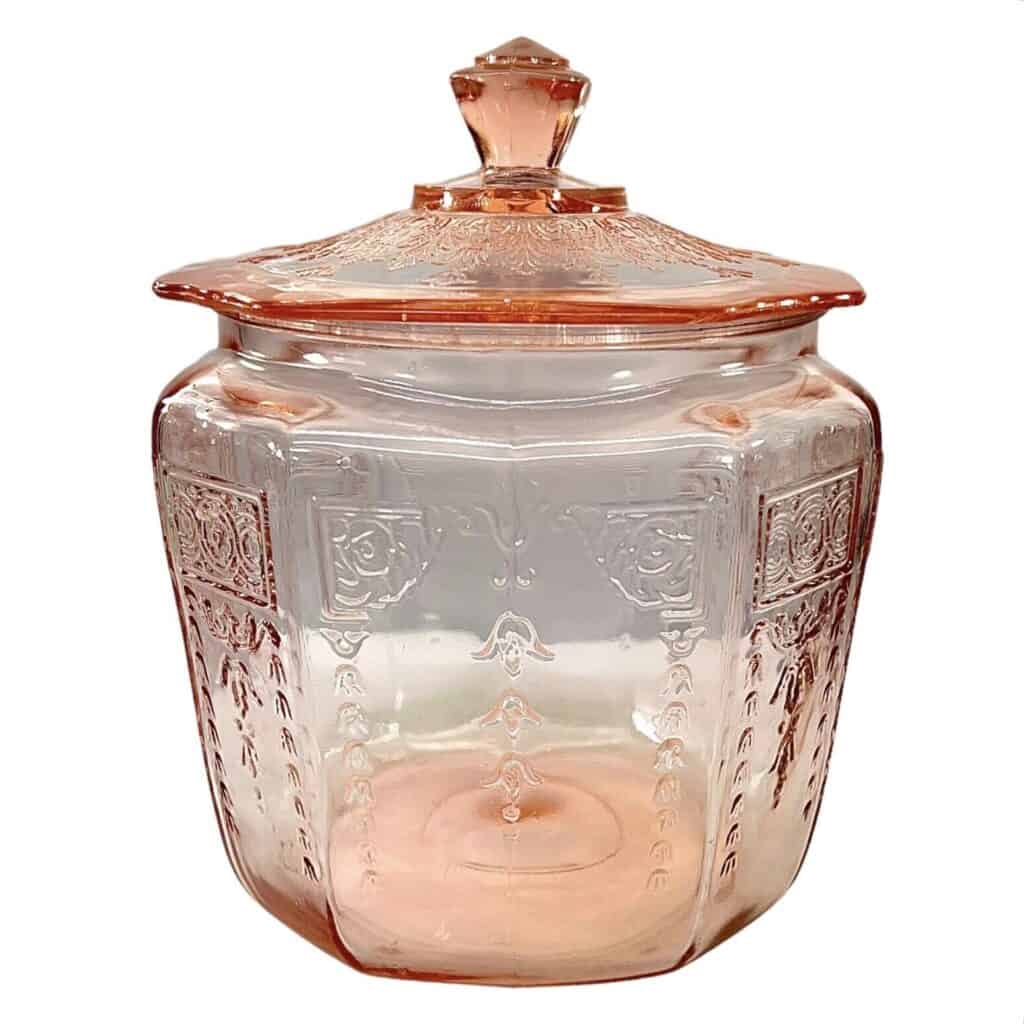
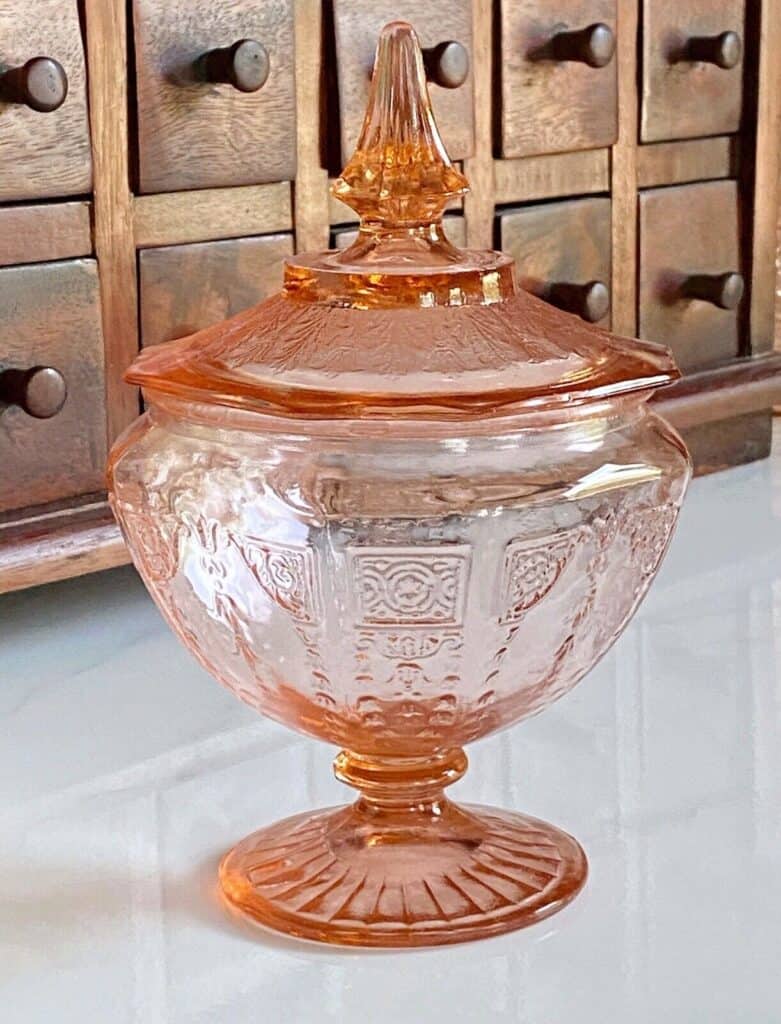
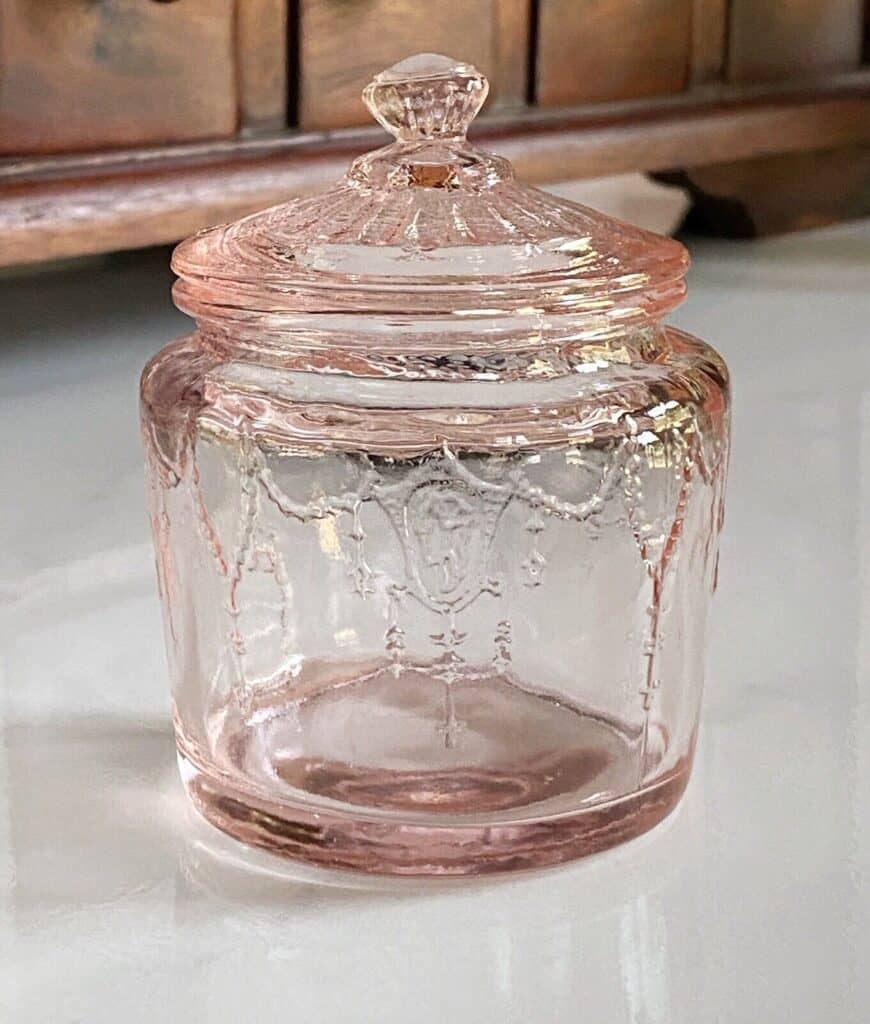
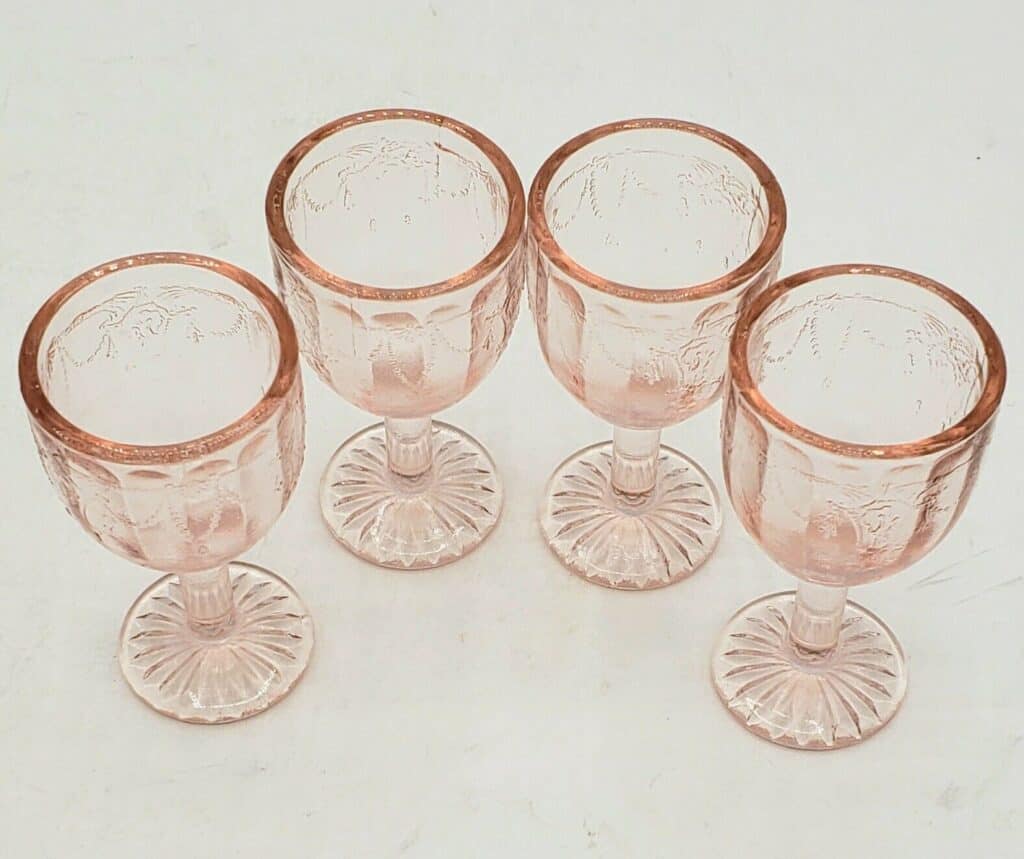
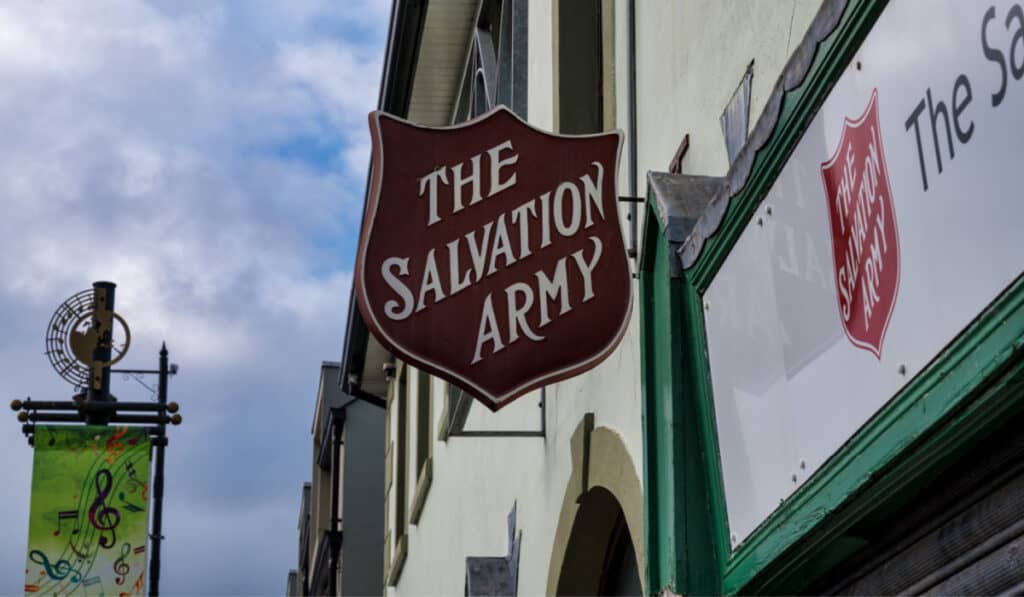
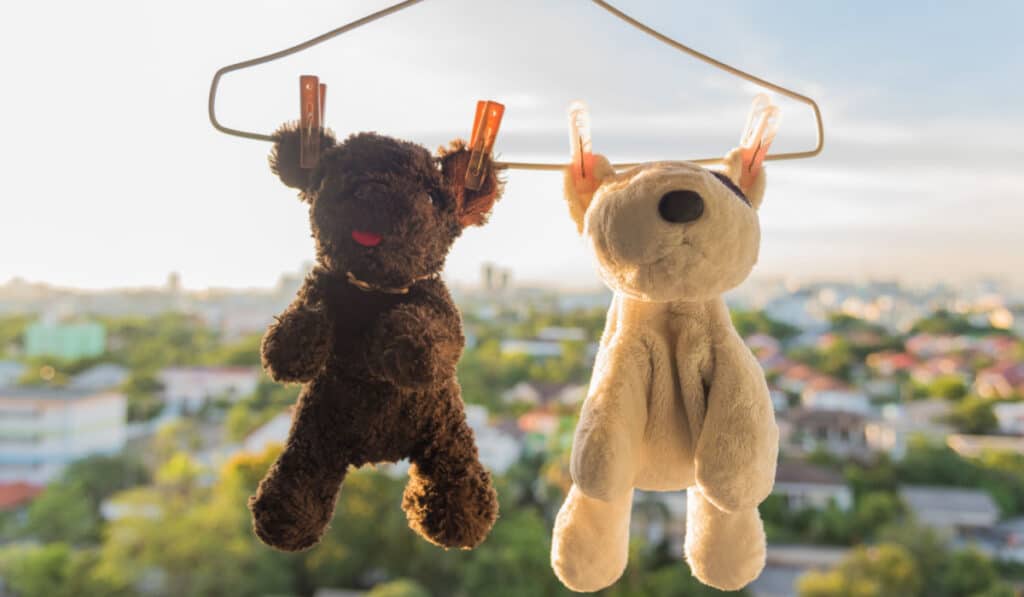
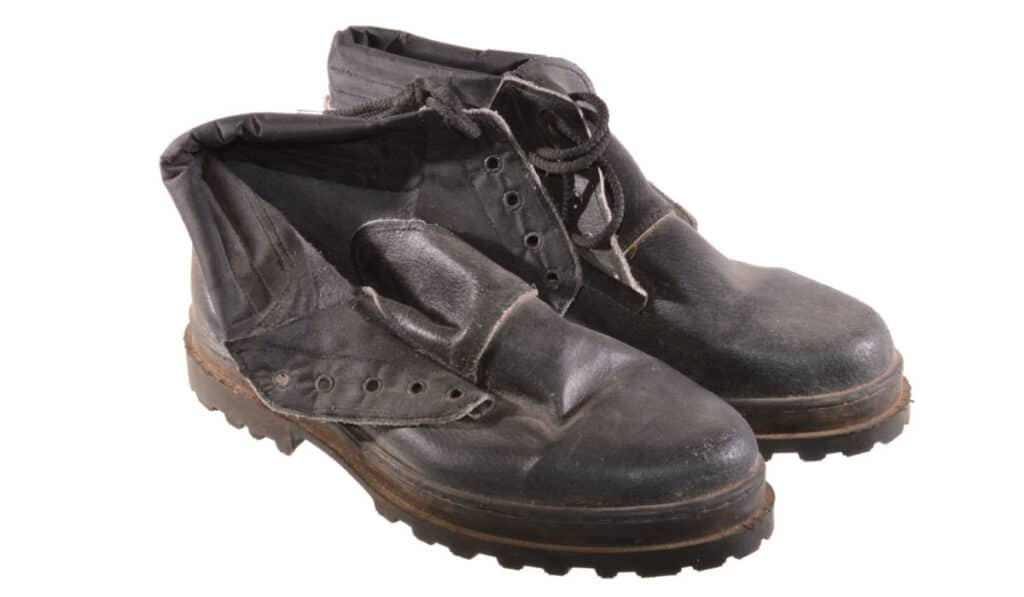

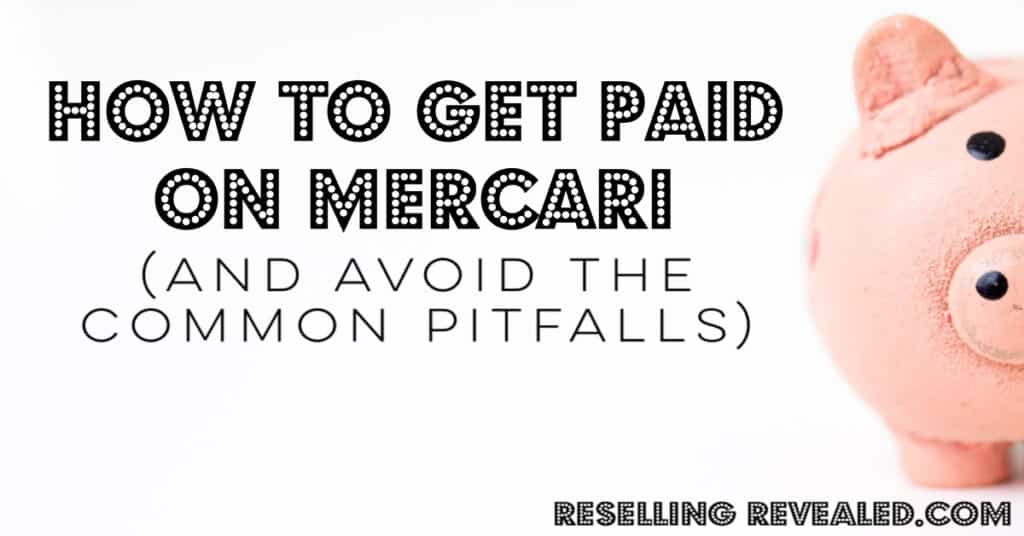

Nice.. I have a few pieces I need to sell. .. I have Sons and they don’t want them.. So I decided to sell , my collections , the help you provide was helpful . Thank You